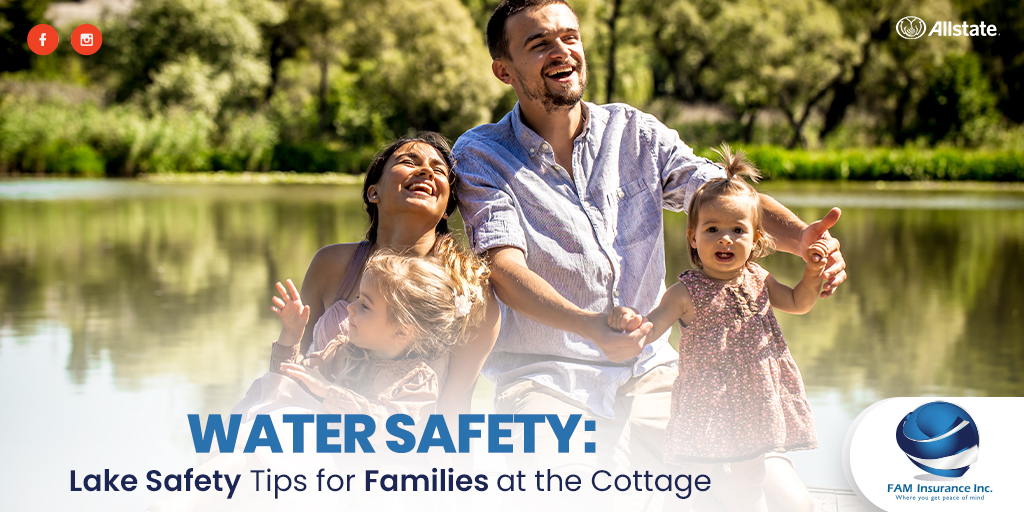As we get ready for cottage season this year, we anticipate spending a lot of time at the lake and we can’t help but think about water safety for our family.
We bought our cottage back in the winter of 2020 and when we bought it, we initially planned to use it occasionally and rent it out. However, when COVID-19 hit, our vacation plans changed. We ended up visiting our cottage quite frequently during the spring and summer months.
Like many, our visits to the cottage included lots of time at the lake. We spent more time by the water than any summer before. I mean, what’s better than a gorgeous summer day at the cottage on the water playing at the beach?
With us spending more and more time at the lake, the girls became more and more comfortable in and around the water. However, at ages six and eight, they are still young and not expert swimmers. We would have loved to get them into swimming lessons, (we actually enrolled them last year) but due to COVID-19 we weren’t able to move forward as instructors weren’t able to come into close contact with students. So, with the girls not being strong swimmers, it was very important for my husband, Jason, and I to be conscious of water safety especially when it came to them swimming in the lake.
Here are some safety tips for you and your family to stay safe on the water this summer as you visit the cottage.
Tip #1 – Ensure everyone has a properly fitted personal floatation device (PFD) or life jacket
We love our family watersports when we’re at the cottage, like paddle boarding and pedal boating. For those activities, as well as when going out on the boat, wearing a life jacket is a must. Life Jackets for Life say: “In boating-related deaths, 81% were not wearing one at the time of the incident and an additional 5% were not wearing one properly.”
When choosing a life jacket or PFD for your child, know that life jackets aren’t one size fits all. There is recommended sizing for life jackets/PFDs for children by weight, so be sure you weigh your child and shop for one based on their weight.
Also make sure you try the life jacket/PFD on your little one to make sure it fits properly – give it an upward tug at the shoulders to see if it blocks your child’s ears or mouth. If it moves, you will likely need to size down. You want to ensure your child’s life jacket fits nice and snug.
Tip #2: Be aware of the area
When going to the lake or other open bodies of water, be sure to check the water depth as well as water temperature. Also keep an eye out for dangers such as any currents or undertows that may pose a danger to you and your children. Consider having children wear water or boating shoes which give more traction than bare feet and protect their feet from rocks and other sharp objects that may be in the water.
Tip #3: Always supervise young children
The most important tip I can share when it comes to water safety is adult supervision. Parents and guardians need to be hands-on and involved when it comes to keeping kids safe. Drowning can occur in as little as 30 seconds and is often silent. It’s not like in the movies where the person splashes around and screams. Most of the struggle is underwater and this is why it’s important to be within arm’s reach of your little one while in the water.
As the kids get older, have serious discussions with them about water safety and make sure they understand that they are never to go near open water without a parent or adult.
Other tips:
The Lifesaving Society offers additional materials online that parents and guardians should check out on water safety, too. Here’s what it advises on its website:
- Swim only in the designated area(s) that are supervised by lifeguards.
- Swim with a buddy – don’t go into the water alone or without an adult present.
- Learn to swim – basic swimming ability is a fundamental requirement in any meaningful attempt to eliminate drowning.

